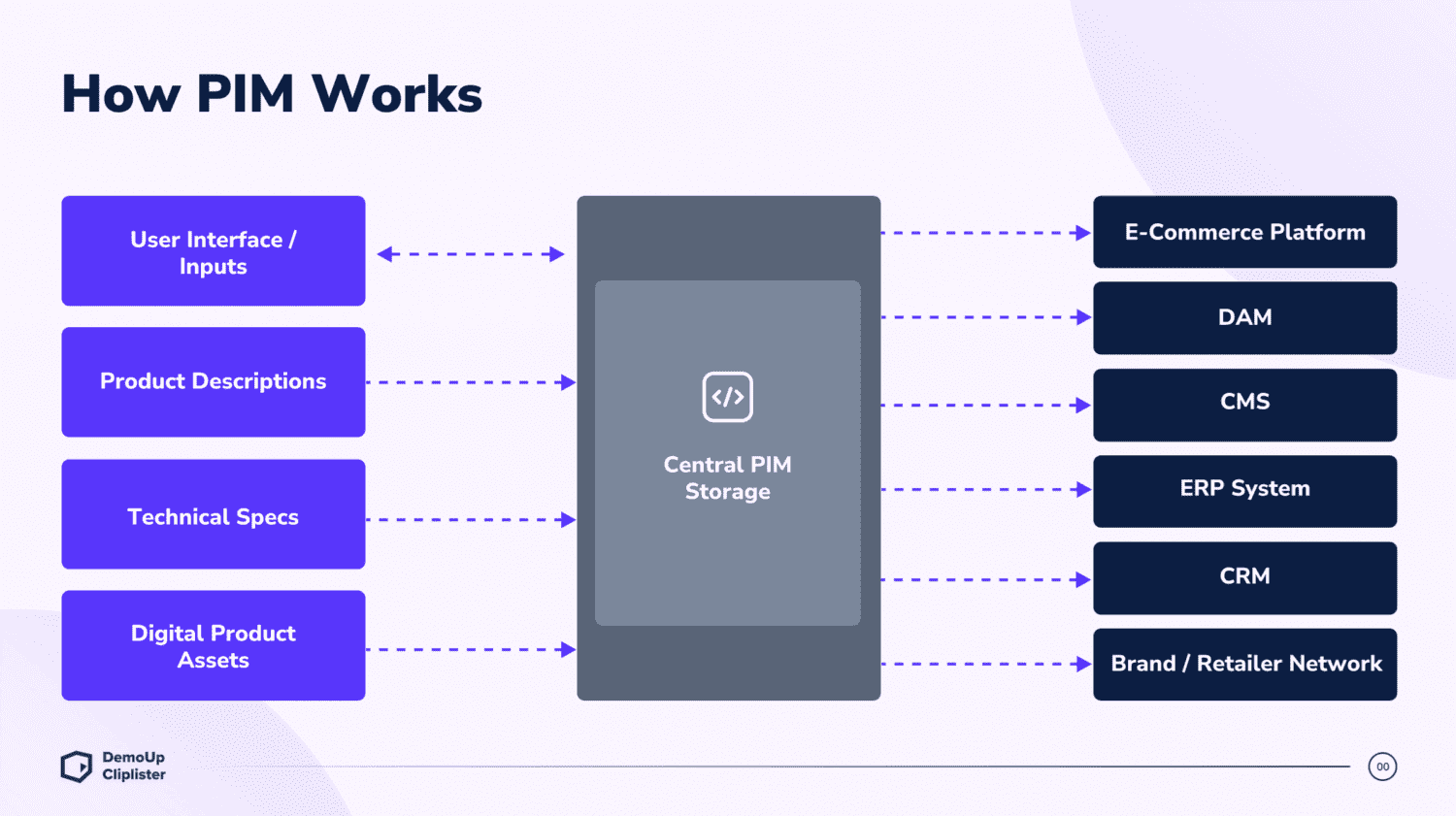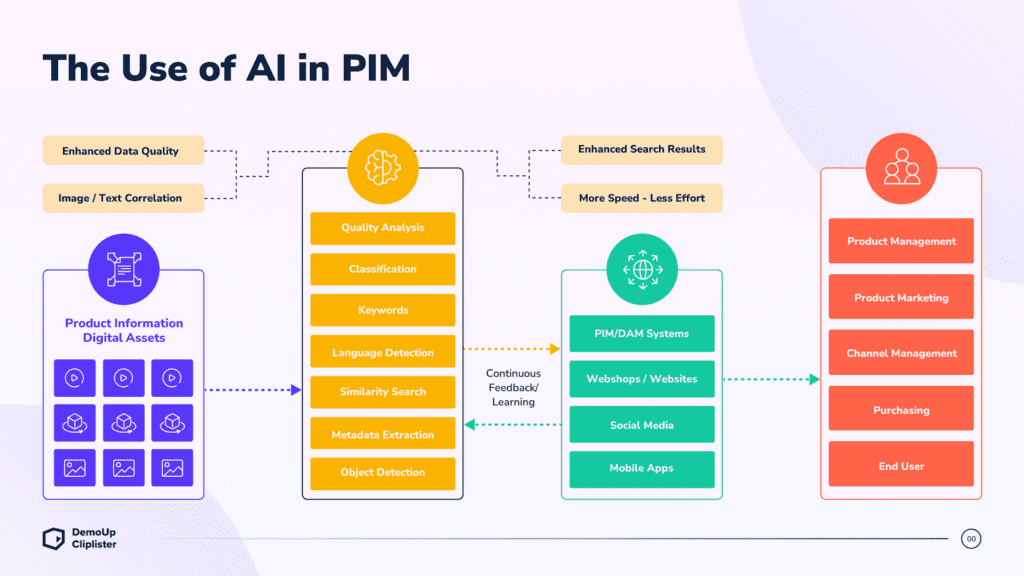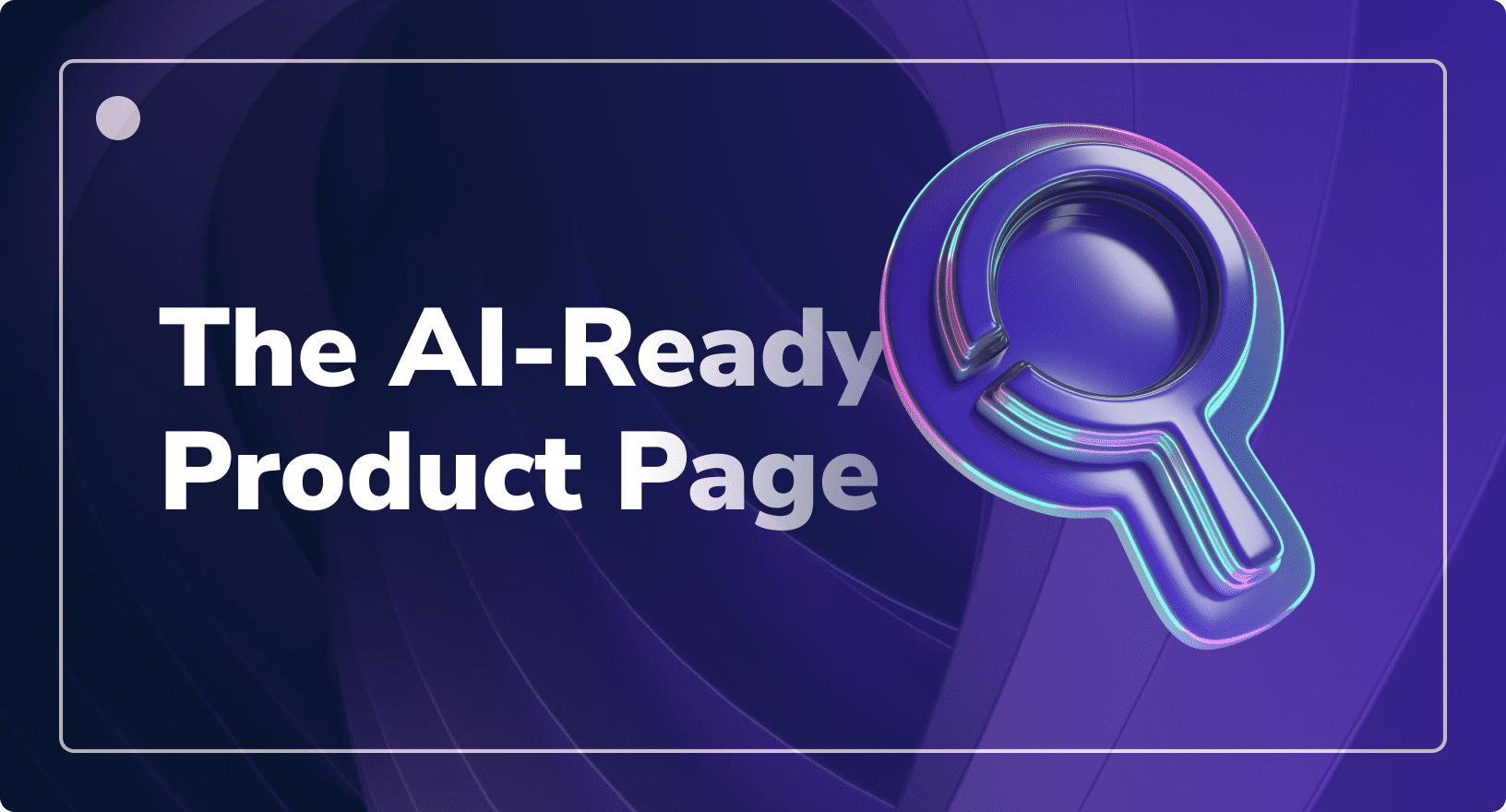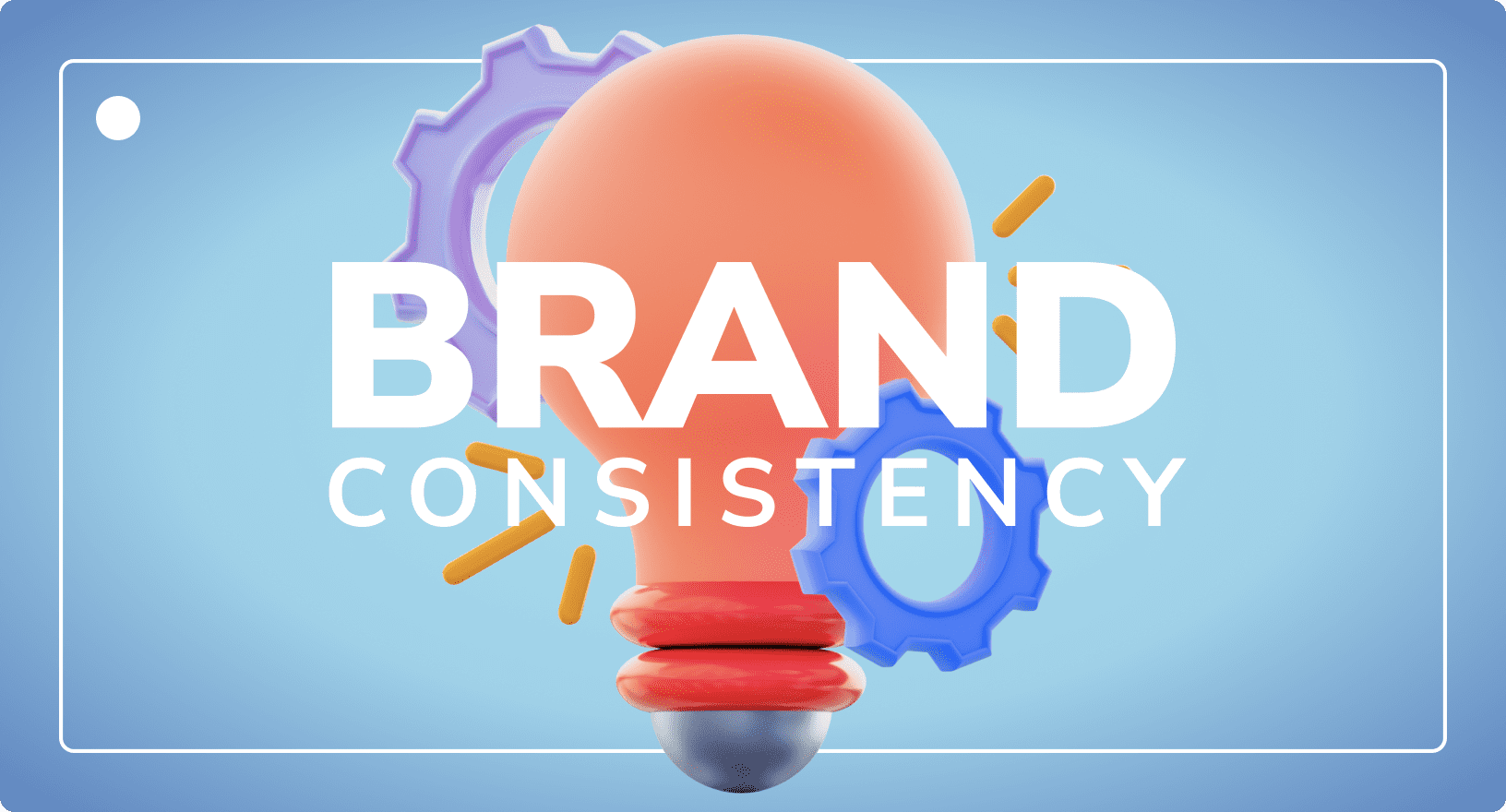The Ultimate Guide to Product Information Management (PIM)
Industry Insights
Updated on November 13, 2025
As an e-commerce business owner, you understand that the heart of your success lies in managing product information effectively. This foundation ensures customers find what they need, leading to sales.
But let’s be honest: managing product data can be a puzzle. Product information management (PIM) transforms complexity into simplicity.
In today’s digital landscape, your products compete for attention. It’s not just about offering great products; it’s how you present them.
PIM systems are the unsung heroes, ensuring accurate and compelling product descriptions. They’re the stage managers, ensuring product data quality across all sales and e-commerce channels.
Imagine a central hub where all product information is meticulously organised, accessible, and easily updated. From technical specifications to digital assets, everything is at your fingertips.
This article explores how PIM helps integrate product data across platforms, distributes product data precisely, and, ultimately, enables you to sell products effectively.
You’ll learn about the role of PIM software in digital commerce, how it ties into digital asset management, and why it’s essential for managing complex product relationships.
By the end, you’ll understand how a robust PIM platform catalyses business growth, helping you navigate market trends and stay ahead.
What is Product Information Management (PIM)?
As an e-commerce store owner, you need accurate product data for all your sales channels. Consistent product information is vital, whether it’s on your website, digital catalogues, or marketing channels. This is where product information management (PIM) comes in.
PIM systems let you collect, manage, and distribute product data to multiple channels. They’re a single source of truth for all your product-related data, ensuring consistency.
Updating product descriptions, specifications, and digital assets across multiple platforms is tedious, and error-prone, especially as your business grows.
A PIM system simplifies this by providing a central hub to manage and distribute data to all channels quickly.

But PIM isn’t just about organising data; it’s also about enriching it. With features like data enrichment and product lifecycle management, you can add detailed descriptions, high-quality images, and other digital assets to your products.
A robust PIM platform also integrates with tools like digital asset management (DAM) and enterprise resource planning (ERP) systems. This integration ensures a smooth flow of information across your business, eliminating data silos and enabling efficient processes.
In today’s competitive landscape, customers expect a seamless online shopping experience. With a powerful PIM solution, you can deliver this by ensuring your product information is accurate and you have brand consistency across all touchpoints.
Why PIM Matters
So why is PIM important then?
Because product information management processes are the heartbeat of your business. A robust PIM system integrates with other key business tools, like:
- DAM Software
- PXM Tools
- ERP Systems
- CMS Platforms
- CRM Systems
- Product Data Feeds
- Etc.
In the digital world, customers rely on the information you provide. A PIM system manages product data, from dimensions to digital assets, ensuring customers see accurate and up-to-date information across all sales channels.
This matters to you because, without a physical store, product descriptions and images sell your products. They are all you have to make shoppers click ‘add to cart’.
A PIM solution keeps these descriptions compelling and uniform across all e-commerce platforms, building a trustworthy brand image.
Operational efficiency is where PIM excels. Updating product information manually on multiple channels invites errors. A PIM tool automates this, letting you focus on growth.
As your business grows, so does the complexity of managing product data.
A PIM platform grows with you, handling more products, distribution channels, and digital data. It becomes your source of truth, ensuring everyone, from marketing to partners, stays aligned.
A PIM system also transforms product data into a strategic asset. It ensures every customer gets high-quality information, whether in a print catalogue or online.
Key Components of Product Information Management
Managing product information across channels is a challenge many people face. Each sales channel needs detailed, uniform data to present your products well.
Here, we explore the essentials of a PIM, and how you can use it to better handle product data and craft the best product experiences to boost sales.

Data Collection
As an e-commerce business owner, your success depends on quality product data. It’s the backbone of your online presence, affecting the customer experience and sales.
Product data collection is the first step in product information management (PIM). Think of it as gathering ingredients for a recipe; without them, you can’t create compelling product content.
Look at your internal systems. They hold a treasure trove of raw product data—from dimensions to materials. Your PIM software can pull this data from ERP systems, inventory tools, and print catalogues.
Next, turn to your business partners. Suppliers and manufacturers can provide detailed product specs and digital assets, like high-resolution images. With a robust PIM solution, you can import data directly from them, ensuring quality.
Don’t forget digital channels. E-commerce platforms and marketplaces can show how your products are performing. This feedback is crucial for optimising your product content.
To make data collection easier, PIM tools often automate this process. They can fill gaps and update information in real time, keeping your product data current and attractive.
Likewise, data governance is critical. A centralized system manages this information, ensuring consistent branding across all sales channels, from your website to social media.
Data Storage
Running an online store means you have to juggle many tasks. Prices, descriptions, specs, and images all need attention. Drop one, and the customer experience suffers.
A PIM system provides you with the tools to manage these tasks effectively and store this information in one place.
Retailers need data feeds from suppliers. It can even enrich the data with extra details. This reduces manual updates, giving you more time to sell products.
A product information management system is the engine room of e-commerce. It keeps your product catalogues shining and your customer experience smooth.
While you focus on sales, your PIM software guards your product content. In e-commerce, quality data is the foundation of success. With a solid PIM solution, you’re set for success.
Data Management
Imagine you’re buried in preparation for a huge sales launch. New products are arriving, descriptions need tweaking, and flashy photos are piling up.
But there’s a nagging doubt—is all this information consistent across your website, social media, and marketplace listings?
Data management collects, organises, and maintains all your product data in one place, like a PIM system for instance. Think of it as your product information command centre.

Feed your PIM system all your product details—descriptions, specs, images, and even those quirky social media captions. The PIM system becomes your master data management hub, ensuring everything is consistent, accurate, and current.
Now, picture this: you update a product description in your PIM system. With a few clicks, that update zips across all your relevant e-commerce outlets.
No more copy-pasting or scrambling to update listings one by one. Data management in a PIM system saves you time and ensures your customers see the correct information.
But data management is about more than speed; it ensures quality. Imagine customers abandoning their carts because you listed the wrong size for a garment. A PIM system with data validation tools can catch these errors before they happen, saving sales and boosting your customers’ experience.
Data Distribution
Let’s say you’ve spent hours crafting the perfect product descriptions. Your product photos and videos are top-notch. Then, disaster strikes! A customer finds a red jacket, but the description says blue. Confused, they look for a red jacket somewhere else.
Inconsistent and incorrect product data across channels confuses customers and kills sales. This is where data distribution comes in. It’s the secret weapon of successful multi-channel e-commerce businesses.
Product information management (PIM) systems are the hub for all your product data. Think of it as your product bible. It holds descriptions, specs, high-res images, and marketing materials.
A PIM system effortlessly pushes this consistent product data to all your sales and e-commerce channels. Your product information will be spot-on everywhere, whether it’s your website, Amazon, eBay, or social media.
This consistency builds trust and boosts sales. Customers know they get the same accurate information no matter where they find your brand. Plus, search engines love structured data, which PIM systems provide. Your products are more likely to appear in searches, boosting your online visibility.
So, when planning a multi-channel strategy, remember that data distribution is the invisible thread that ties it all together. With a PIM system that ensures consistent product data across every touchpoint, you improve product communication, improve brand recall, and grow demand for your products.
Benefits of Effective Product Information Management
Do you dream of accurate product descriptions everywhere? A product information management system can make it real.
PIM solutions streamline your product data, save time, cut errors, and increase sales. Let’s explore the benefits of PIM software for e-commerce brands like yours.
Key PIM Benefits
Operational efficiency
Better customer experience
Increased sales
Operational Efficiency
In e-commerce, streamlining operations is crucial. A product information management system helps you manage product data and cut costs. By centralising data, it eliminates chaos and errors. Your PIM software keeps all digital channels in sync.
It makes product data management easy, avoiding manual update mistakes. With master data management, it handles multiple sales channels, ensuring perfect product details. PIM solutions boost efficiency, combining information management and digital asset management.
This integration smooths workflows and strengthens your product information management process. Consider adopting a PIM solution that enhances efficiency and customer satisfaction; it’s more than cost-cutting; it’s an investment in operational excellence.
Better Customer Experience
Do you remember when you couldn’t find the right product online? The descriptions were unclear, the images were terrible, or the details didn’t match. Annoying, right? In e-commerce, accurate product information management is vital. It wins customers.
Clear and precise product data ensures a smooth shopping experience. With a PIM solution, your descriptions are clear and detailed. Imagine a customer looking for hiking boots. A PIM system highlights features like waterproofing and breathability in one view: no more vague descriptions or mixed details.
But there’s more. PIM software helps you personalise the shopping journey. It tailors descriptions based on a customer’s history or past buys. Your online store becomes a guide, suggesting the perfect items and removing the guesswork.
Product information management software creates a smooth customer experience. With accurate information, customers buy confidently. This boosts your sales and builds loyalty.
Increased Sales and Revenue
As an e-commerce store owner, you must get products to market quickly. A product information management system helps you do this. It manages product data in one place, keeping descriptions and prices accurate—no more sifting through disparate data or facing delays.
With PIM solutions, you can launch products quickly with real-time updates. This accuracy builds customer trust and, in turn, boosts sales.
Implementing a Product Information Management System
Do you struggle with product data management? Then it’s probably time to implement a PIM solution. This way, you can forget the hassles of product information and focus on growing your online sales channels.
With the right product information management software, you streamline data, making your life easier. However, implementing complex software like DAM or PIM solutions can be a headache. Luckily, we’re here to break it down for you into more digestable parts:
Planning and Strategy
Starting your PIM solution journey involves a few key steps.
- First, assess your business needs. Each business is unique.
- Set clear, measurable goals. Understand where you want to go and how product information management software can help.
- Establish Key Performance Indicators (KPIs). These will guide your progress.
- Review your product data management processes. Find ways to improve them.
- Identify stakeholders. Who will lead this project in your company?
- Check your current project management tools. Will they work with the new PIM system?
- Finally, choose a PIM solution that fits your goals and can grow with your business.
Choosing the Right PIM Software
Choosing the right PIM solution is crucial to e-commerce success. Here’s what to consider:
- Centralised data management: The system should be the single source of truth.
- Flexibility and customisation: Your PIM solution must fit your business needs.
- Quality customer support: Seek a partner to guide you through the journey.
Top tools to explore:
- Stibo Systems: Offers a cloud-based PIM solution for retail, syncing accurate product information across channels.
- InRiver: Provides a comprehensive PIM that manages the product journey, ensuring a consistent experience.
If you’re also interested in uniting your product content tools like your DAM or PIM system into one function, be sure to read our guide on choosing a digital asset management solution.
Integrations with Existing Systems
Your new product information management system is excellent. It works best with your whole team. You have digital assets in your DAM software, inventory in your ERP, and product details in your PIM. But they’re all separate! Integrating your PIM with these systems unites your data.

Data migration can be tricky, but we make it easy. We map your product data into your PIM for a smooth shift so you can say goodbye to mismatched product pages. The result? Smooth workflows, fewer mistakes, and a happy marketing team that can publish accurate product details quickly.
Optimising Product Data for PIM
Have you ever spent hours updating product information across different channels? Product information management systems can change the game. But for the best results, your product data must be perfect.
Here’s how to make your product information PIM-friendly:
Creating High-Quality Product Data
Writing good product descriptions is essential for your e-commerce store. Your product information management system helps show off each product well. Use words that highlight benefits and solve problems. Standardised data keeps everything consistent and reliable.
This boosts SEO and builds customer trust, leading to fewer returns and happier shoppers. Take time to improve your product stories and see your business grow.
Managing Product Images and Multimedia
Clear product images matter for e-commerce stores. Sharp photos and multimedia improve customer experiences. A PIM system helps optimise visuals by formatting images consistently and using high resolution. Tag images with metadata for better search results and add 360-degree views or videos for interaction.
Personalisation and Targeted Marketing
Personalisation is essential in eCommerce. A PIM system helps manage data for personal shopping experiences by using customer data to suggest products and messages. For example, highlight eco-friendly products for green shoppers. This boosts satisfaction and loyalty.
Improving Product Searchability and Access to Information
Finding products quickly is crucial for shoppers. A PIM system boosts searchability and information access. Use detailed and relevant titles and descriptions, including keywords customers use. Organise product categories logically with a PIM that reduces search time and improves the user experience.
Streamlining Operations and Efficiency
Automation transforms e-commerce operations. A robust PIM system streamlines tasks and reduces errors. It automates product information distribution across channels, saving time and ensuring accuracy. Faster product launches give a competitive edge and capture market updates.
Supporting Omnichannel Retailing
Consistent product information is critical for omnichannel retailing. Customers expect the same quality information everywhere. A PIM system integrates with sales platforms to keep data updated. Sync updates in real-time and meet channel needs. This boosts customers’ experiences and simplifies management.
PIM Best Practices
To keep your product information accurate and current, centralise it. This prevents discrepancies. Audit the data regularly to catch and fix errors. Use high-quality images and videos to improve customers’ experiences.
Make sure your data is optimised for search engines. Use automated workflows to reduce errors and speed up processes. Choose PIM software that fits your business and integrates with your systems.
Mistakes to Avoid
Avoid neglecting data governance and over-complicating your processes. Regular audits prevent outdated information. Setting clear data governance policies and following them simplifies processes and trains your team well. Automated tools help maintain data accuracy, efficiency, prevents manual errors, and saves time.
Future Trends in Product Information Management
As an e-commerce store owner, you lead in the digital world. AI and machine learning are changing product information management. These aren’t just fancy terms; they automate tasks and improve customer experiences. Predictive analytics turn your product data into valuable insights.

This helps you meet customer needs and manage stock better. Consumer habits are evolving, and PIM enables you to keep up by personalising each customer’s shopping journey.
Experts say PIM will blend more with new technology, making it vital for your business. Embrace these changes to stay ahead in e-commerce.
Wrapping Up
Product information management (PIM) is crucial to e-commerce success. It organises your product data and improves customer experiences. Investing in PIM makes your product information accurate and easy to find. PIM isn’t just about data—it’s about telling a story that connects with customers.
This boosts engagement and sales. For growth and success, PIM is vital. It supports a more efficient, customer-focused business model. Embrace PIM to stay agile and responsive in a changing market.
Frequently Asked Questions
Here, you’ll find answers to common questions about product information management (PIM). For more details, visit our homepage or check out our blog.
PIM is a system that manages all your product data in one place. This includes descriptions, images, and prices. It helps you enrich data, ensuring everything stays accurate and up-to-date.
A PIM centralises and streamlines product data management, ensuring accuracy and consistency across sales and marketing channels.
A PIM improves data accuracy, streamlines updates, and ensures consistency across sales channels, enhancing efficiency and customer experience.
Product Data Management (PDM) focuses on storing and organising product-related design and engineering data, mainly used in manufacturing and R&D.
Product Information Management (PIM) centralises, enriches, and distributes product data for sales, marketing, and e-commerce, ensuring consistency across multiple channels.
A PIM centralises product data, ensuring accuracy and consistency. Core processes include data collection, enrichment, categorisation, validation, and distribution. Key features include bulk editing, workflow management, digital asset integration, version control, and multi-channel syndication, streamlining product content management for e-commerce, marketing, and sales teams.
Better Content. More Sales.

Fill out the form to discover our end-to-end eCommerce content solutions for brands & shops




